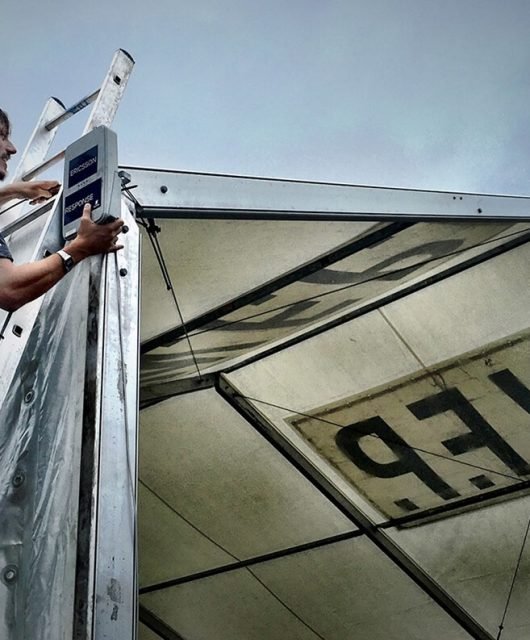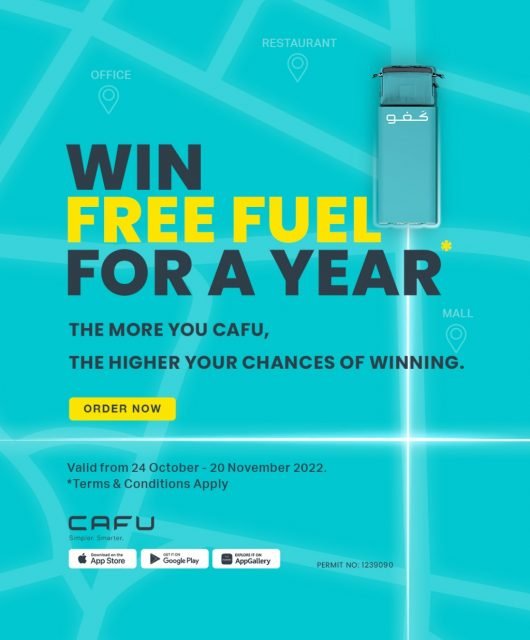Week: July 27th – 31st
by Interbrand
Several weeks ago, when the gravity of the situation became clear, Interbrand started regular reporting on how brands were dealing with the COVID-19 crisis. What’s now becoming clear is that the current climate is one of near perpetual disruption. So the brand consulting firm made the decision to keep on telling the stories of inspiring brand leadership and strategy amid the latest crises in an anxious world. Interbrand’s goal remains the same: to provide an up-to-the-minute source of information, inspiration and insight on brand moves as they happen.

Technology & Social Media
Twitter is exploring additional ways to make money from its users, including a subscription model; it has suffered a sharp decline in its core advertising business as many advertisers pull back due to the pandemic. Twitter has just reported second-quarter ad revenues of $562 million, a 23% decrease compared to the same quarter a year ago.
The company has also been hit by advertisers participating in an ad boycott of social media, linked to the nationwide racial justice protests. “You will likely see some tests this year” of various approaches, founder Jack Dorsey said, confirming that the company is seeking to diversify its sources of revenue in what are “very, very early phases of exploring.” Like its rival social networks, Twitter has focused on offering a free service, making money by allowing brands to target ads to its millions of users.
eBay and PayPal’s five-year operating agreement has just ended, and the online marketplace is eyeing billions in new potential revenue by managing its payments in-house. eBay acquired PayPal in 2002 and spun it off in 2015. While the two companies have since operated separately, from eBay’s perspective, not much changed.
PayPal processed all of eBay’s payments until 2018, when eBay started testing a small portion of its payments in-house, with processing partner Adyen. But now, eBay will fully roll out the payments platform it’s been building for years, which it says could unlock as much as $2 billion in revenue and $500 million in operating profit in 2022.
eBay’s total revenue in 2019 was over $10 billion. Using payments data, eBay will also explore other financial products, like loans for its merchants. “Payments is so foundational to a commerce experience,” Alyssa Cutright, VP of global payments at eBay, said. “By having control of that, it gives us so much more flexibility in how we continue to enrich the buying and seller experience,” she added.
Sports & Entertainment
The NBA has announced a partnership with Microsoft and its Teams videoconferencing platform to welcome at least 300 fans, split by team, to cheer, jeer and appear on the league’s 17-foot sideline video board. Using the platform’s “Together Mode,” fans will be seated in a virtual arena and able to interact with each other.
Audio mixed from the feeds will be incorporated into the game broadcast. “As we were thinking about this, we were focused on creating the most genuine experience for our fans at home and for our players in the arena,” said Sara Zuckert, senior director of experiential and DTC marketing at the NBA. “There’s nothing that can replicate the feel of an NBA arena.
We look at all of this as testing for the future.” Teams will be tasked with selecting fans for each game, and the video board will be sponsored by the league’s new partner, Michelob Ultra, which also has seats available for giveaways and prizes. Each “section” of fans will have a moderator. The league will also incorporate at least 30 cameras, some robotic, to get closer to the court than ever before to showcase new angles and shots, such as a huddle camera and a below-the-rim camera for fans watching at home.
Other angles will replicate the view of a fan sitting 10 rows from the court. “The most important thing is what happens on the court. We’re going to figure out what works and what doesn’t,” said Craig Barry, evp and chief content officer for Turner Sports, which operates NBA TV. He noted that for the first time, the NBA is a “made-for-television event.” For fans not included in the Microsoft experience, a virtual cheering experience will be available on the NBA app and Twitter, which will be reflected on the in-game video board.
The Washington D.C.-based Washington Redskins will be known as the Washington Football Team for the 2020 season. Sports fans and activists alike have been anticipating the new name of the franchise ever since it announced in July that it would drop the controversial name. Last week the team finally made its move – at least temporarily – and rebranded everything from its social media handles to its uniforms.
The change was reflected in a social media redesign and a reveal of new uniforms, which keep the burgundy and gold color scheme. The team logo no longer features a Native American head, replacing it on each player’s jersey with their number.
However, the NBA’s LeBron James mocked the team’s “thorough” and “intense” review of potential names as leading to one of the blandest letdowns in sports history. The team plans to use its temporary name through the 2020 season. In the meantime, it will “be seeking the feedback of players, alumni, fans, sponsors and the community for the new team name it will use at some point in the future.”
Automotive & Manufacturing
In the UK, interest in buying used cars has jumped in recent weeks as people look for alternatives to public transport following government pandemic warnings, according to online marketplaces. The coronavirus pandemic has caused an exodus from public transport in the UK, with signs of people looking for other means of getting around, including scooters, mopeds and bikes, as well as cheaper cars.
Auto Trader, an online car marketplace, said traffic on its website and apps was up by 29% in June compared with the same time last year, with 64m visits. The number of leads it sent to sellers was up 90% year on year for the month. Motorway.co.uk, another used car marketplace, said it had enjoyed record sales of as much as £1.6m a day since it restarted sales with socially distanced collections in early May, almost a third higher than its previous peak just before the UK’s lockdown.
The increase in used sales is a rare bright spot for British vehicle retailers after new car sales fell by 97% at the height of the lockdown in April. The industry hopes the desire to avoid public transport will help to sustain demand for cars, with particularly strong demand in recent weeks for smaller, cheaper used cars worth less than £5,000.
The National Franchised Dealers Association, the UK car dealer body, found that 55% of members surveyed had increased sales of used cars online in the month to 2 July, compared with only a quarter who had sold more new cars through their websites. “As fears around the pandemic grew, more and more people wanted to transact online,” said Tom Leathes, the chief executive of Motorway.co.uk. “What we see across the whole industry is that the used car market is really buoyant.”
He added that his company had seen many professional dealers who buy from its individual sellers keen to snap up secondhand cars because of low supply. Leathes said he expected the pandemic to accelerate the gradual shift online in car sales, echoing a common belief across the industry, which has been more resistant to the shift to the web than many other retail sectors.
Self-driving car company Waymo and Fiat Chrysler are expanding their autonomous vehicle partnership to commercial vehicles, and Fiat Chrysler will develop fully self-driving vehicles exclusively with Waymo going forward, the companies said. Waymo, part of Google parent Alphabet, and Fiat Chrysler said they will work together to develop autonomous light commercial vehicles for moving goods, starting by integrating Waymo’s self-driving technology into Ram ProMaster vans, which Fiat Chrysler sells globally.
Waymo’s Waymo Via autonomous goods delivery unit will use vehicles co-developed with Fiat Chrysler, the companies said. Self-driving vehicle companies and automakers have been shifting investment and engineering to delivery and other commercial uses of autonomous vehicles, betting that moving goods will offer a faster route to profits than overcoming the technical, social and regulatory obstacles to moving people. The expanded partnership with Fiat Chrysler will cover “ride-hailing, commercial delivery, and personal-use vehicles around the world,” Waymo Chief Executive John Krafcik said.
Travel & Hospitality
Fast-casual restaurant operator Chipotle is turning to product innovation to win over reluctant customers, investing in new food and beverage offerings. “Innovation is a hallmark,” said Chris Brandt, the company’s CMO. “We found out from suppliers that we are one of the few people still doing innovation.”
The chain has announced it will begin serving new non-GMO and certified organic lemonades, fresh waters and tea from farmer-founded Tractor Beverage Co. on July 21. The company will donate 5% of its profits from the beverages to causes that support farmers. Late last year the brand announced a redesign of its restaurants aimed at supporting its to-go business, already sizable at about $1 billion back in December.
The company had already begun installing mobile order pick-up shelves and tech-enabled assembly lines for food preparation and aimed to add features such as walk-up windows and better placement of digital pick-up areas to help locations fill orders more efficiently and customers to pick them up more quickly. “Digital really helped our presence. [We had] food that traveled well,” Brandt said, noting that the company had already partnered with DoorDash, then added Uber Eats. Digital growth is also responsible for accelerating the company’s loyalty program, Brandt noted.
Shake Shack’s latest community outreach effort, a virtual summer Shack Camp, was created for both kids and kids at heart and born out of the challenges the company’s employees are facing in balancing work and family during the pandemic, particularly now that school’s out and summer camps across the country have been canceled.
To participate in Shack Camp, families received a box that included all the supplies they would need for six weeks’ worth of activities, from arts and crafts to coming up with original scary stories to tell around a proverbial campfire. The campaign also helps support The Fresh Air Fund’s virtual summer program, which provides activities for children between ages 7 and 13 in the city, as part of Shake Shack’s mission to “Stand for Something Good.”
Fashion & Retail
Work dress codes have radically altered during the pandemic. According to a poll from market research group NPD, only 10% of people get dressed for working from home at the start of the day and then change into comfortable clothes later. With virtual video conferencing as the only contact with our colleagues, one item of clothing that has become essential is the so-called “Zoom shirt”.
According to Urban Dictionary this is the “shirt or blouse that’s kept on the back of your desk chair to quickly be presentable for video conferences”. A recent poll by LinkedIn found that 42% of camera-ready home workers owned one. “It allows you to retain an image of professionalism on camera without having to get kitted out in full office attire, when you’re sitting at your kitchen table all day,” said Rupert Wesson, director at Debrett’s.
“Dressing in a formal manner helps you look and feel more polished. It conveys respect to others. A study actually found that employees were more productive when casual dress was permitted. The ‘Zoom shirt’ supports this idea.” The pandemic has shifted people’s ideas about what to wear, with a focus on simplicity and pared down wardrobes. “Outfit of the day” culture is no longer relevant in this new normal.
“I think it’s safe to say that dress codes have been gradually relaxing for some time now,” said Charlie Teasdale, style director at Esquire magazine. “The recent benchmark seems to be the shifting attitude of financial institutions which have all got rid of suits and ties for most employees,” he says. Last year Goldman Sachs relaxed their dress code asking staff to exercise “good judgement” in what they wore, while a 2018 poll found that only one in 10 people still wore suits to work.
A mobile app offering rewards for pursuing an eco-friendly lifestyle, susGain, has launched in Singapore. When spending at a sustainable local business, users can earn points as well as a percentage back on their purchase. At the same time, each user’s favorite cause or charity will receive a donation of equal value.
The susGain in-app map also displays water refill stations, clothing swaps, recycling bins, and more near a user’s location; consumers can scan a QR code at each of these areas to receive points, which makes them eligible for additional rewards. The susGain team’s ultimate goal is to spur the creation of more sustainable businesses and practices throughout Singapore. This is aimed at what Harvard Business Review calls the “elusive” green consumer; it found that although 65% of young shoppers say they wish to buy from sustainability-driven brands, only 26% actually do so.
Transport & Delivery
Scout, Amazon’s autonomous six-wheeled delivery robot, is expanding its routes to “select customers” in Atlanta and Franklin, Tenn. Amazon is “starting with a small number” of the devices in each city, and they will deliver during daylight hours Monday to Friday. In January 2019, Amazon had six Scouts in Snohomish County, Wash.
Amazon declined to comment on how many devices it operates now. Like earlier field tests, Scout will initially be chaperoned by “an Amazon Scout Ambassador” in its new neighborhoods. Amazon says Scout is “the size of a small cooler,” but a spokesperson declined to comment on precisely how much each device can carry.
It does not appear customers can select delivery specifically via Scout – Amazon says customers in eligible delivery zones place orders as usual and their packages are delivered by either a carrier or Scout. Sean Scott, vice president of Amazon Scout, said the new locations expose Scout to “varied neighborhoods with different climates” although he noted Amazon also has “a significant presence in these areas through our corporate offices and logistics facilities.”
In December 2018, on-demand delivery company Postmates debuted a self-driving robot named Serve to deliver food, packages and other smaller items in cities. A month later, PepsiCo announced its fleet of self-driving Snackbots was bringing snacks and drinks to the nearly 5,000 students at the University of the Pacific’s Stockton, Calif., campus. And, a month after that, logistics company FedEx debuted its SameDay Bot, which it said would deliver small shipments from retail partners like AutoZone, Lowe’s, Pizza Hut, Target, Walgreens and Walmart. Amazon says Scout moves at a walking pace and has learned to navigate around pets and pedestrians, as well as objects such as surfboards, luggage, refrigerators and Christmas trees.
A London-based company is offering an alternative mass transportation mode that addresses some fears about coronavirus infection risks on public transit: a commuter service using open-topped buses. On-demand bus company Snap is currently testing a new offering that would ferry Londoners to and from work in some of the city’s 233 roof-less tourist buses.
These are double-decker vehicles with an open-air upper deck, used to ferry sightseers about on “hop on, hop off” routes. Most of the London fleet is parked due to an absence of visitors; Snap is hoping to redeploy the open-topped tourist buses as Covid-safe pop-up transportation for locals, extending the pandemic-era trend of outdoor living to public transport.
The service is still in development. Snap is currently going through a crowdsourcing process, taking details of people interested in the service to calculate which routes might have highest demand. Initial test journeys ran this week following the route of London Underground’s Victoria Line.
Prices are expected to run at the same cost as an average tube journey – £3.30 ($4.19) – with multiple pick-up and drop off points for passengers but far fewer stops than the average bus. Snap estimates that it can run a viable service at that cost with passengers filling just a quarter of a bus’s usual capacity, a level that would make it possible for everyone to sit on the upper deck and maintain some distance from each other.
Frequent cleanings after each trip would further mitigate risk. “The Tube in London is currently at 30% of its usage before the pandemic, while car use is at about 80% of where it was pre-pandemic” says Snap CEO Thomas Ableman. “We really don’t want a car-based recovery to this crisis, so we need to find solutions that people are comfortable with — and you can’t get a more Covidsecure means of transport than an open-topped bus.”
To read the full report, please download here.
To access daily Brand Moves, please visit www.brandchannel.com.





